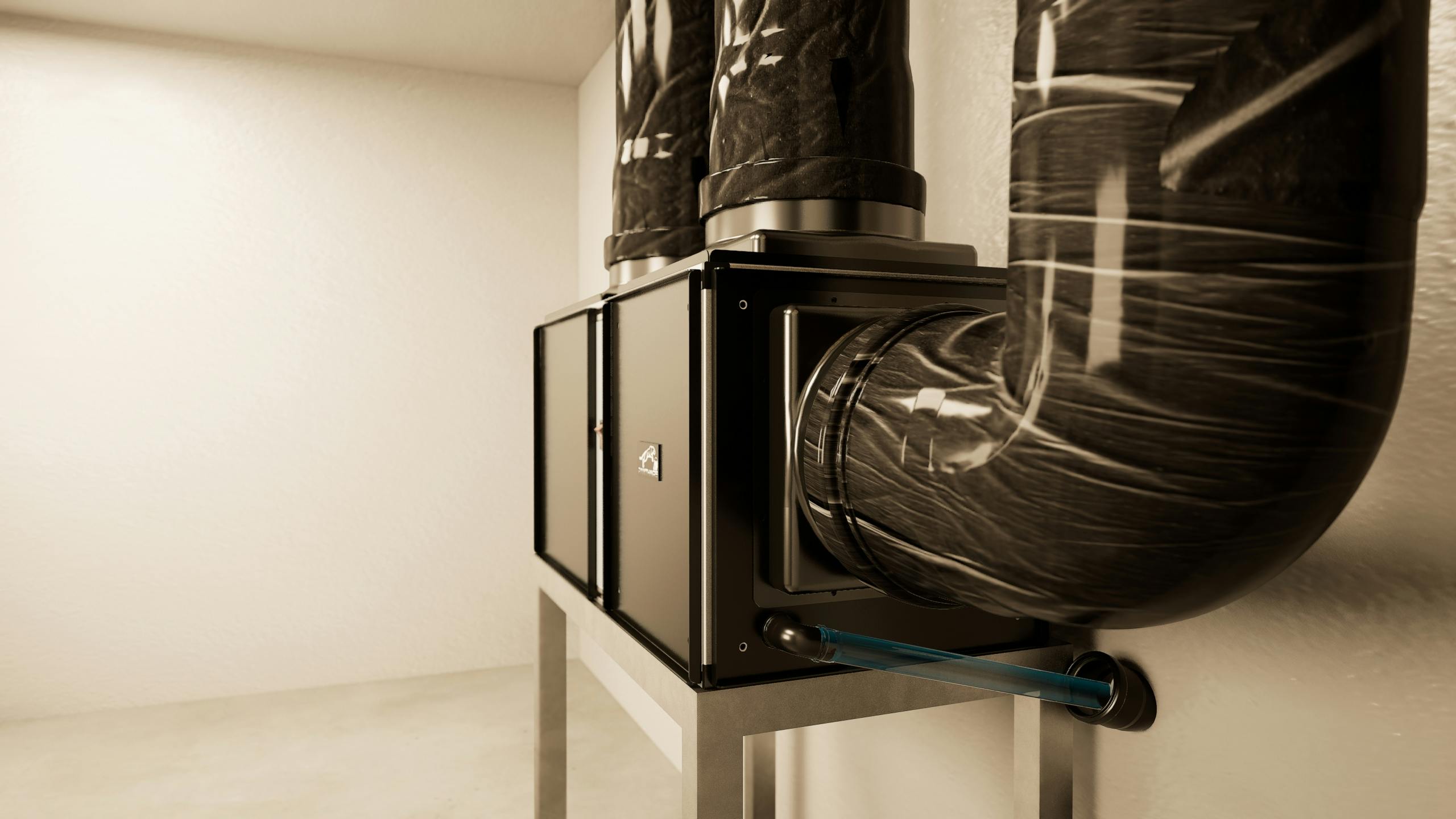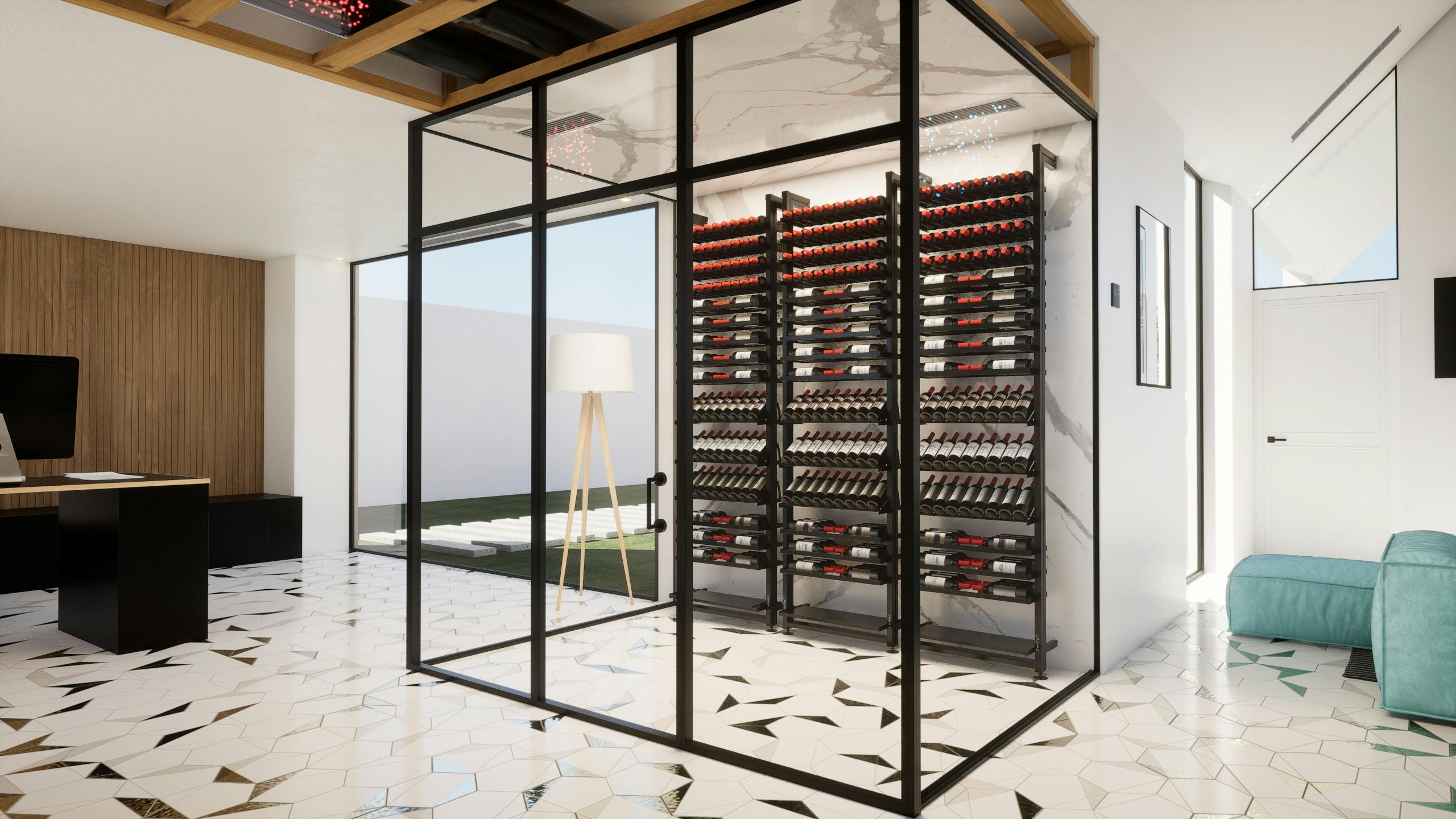
June 10, 2025
Wine Cellar Cooling Units, Ducted, Split, or Ready-to-Install?
Planning to build a new wine cellar? Compare today’s cooling solutions — ducted systems, split systems, or ready-to-install through-the-wall units. Discover which option fits your needs and why Panthaire focuses exclusively on concealed ducted systems for modern cellars.
Wine Cellar Cooling Units - Ducted, Split, or Through-the-Wall?
Introduction
Building a wine cellar starts with one critical decision: how to keep your bottles at 55 °F (12.7 °C) all year round. Search data shows most owners narrow their choice to three main approaches:
- Through-the-wall units (DIY / ready-to-install)
- Commercial split systems
- Fully ducted systems
Use this guide to determine which option fits your project and why many recent builds choose ducted cooling for a quieter, cleaner, and more visually appealing result.
1. Quick Comparison Table
Through-the-Wall (DIY)
- Noise level: noticeable fan and compressor noise inside the cellar
- Look: large visible grille on the wall
- Equipment budget: $2,000 – $4,000 (installation extra)
- Best suited for: starter hobby cellars where noise and aesthetics are less critical
Split System
- Noise level: fan audible in the cellar; compressor located outside
- Look: evaporator mounted on an interior wall or ceiling
- Equipment budget: $5,000 – $8,000 (HVAC installation extra)
- Best suited for: basement or garage projects where some visible equipment is acceptable
Fully Ducted (e.g., Panthaire APEX)
- Noise level: virtually silent in the display area
- Look: only discreet supply and return grilles are visible
- Equipment budget: $6,000 – $11,000 (ductwork + professional installation required)
- Best suited for: glass or modern cellars where silence and aesthetics are top priorities
Prices refer to equipment only; installation varies by region and contractor.
2. When to Choose a Through-the-Wall Unit
- Converting a closet or under-stairs space
- Tight budget and occasional fan noise is acceptable
- Adjacent room can accept the warm exhaust air
Trade-offs: visible grille, higher noise level, limited capacity.
3. Split Systems — The Renovation Favorite
- Evaporator is installed inside the cellar; compressor is located outdoors
- Reduces heat in living spaces compared to through-the-wall models
- Good choice for garages or basements where visible equipment is acceptable
Watch-outs: fan remains visible and audible in the cellar; refrigerant lines require a licensed HVAC technician.
4. Why 2025 Projects Favor Ducted Cooling
Homeowners and architects are increasingly requesting silent and invisible solutions.
With a ducted system, the unit is completely installed outside the cellar; only slim grilles remain visible.
Benefits:
- Nearly silent experience during tastings
- Clean sightlines for glass wine walls and accent lighting
- Easier maintenance access — technicians work in a utility area, not over valuable bottles
Panthaire manufactures only fully ducted APEX units because this design delivers the calm, uninterrupted presentation that modern cellars demand.
5. Sizing the Capacity Correctly
Never guess. Measure L × W × H, then adjust for glass surfaces and insulation.
Use Panthaire’s free online calculator or ask our team for a sizing check. Correct capacity prevents short cycling and premature wear.
6. Installation Snapshot
- Place the APEX unit in a utility room, ceiling void, or adjacent crawl space
- Use factory-supplied insulated ducts; avoid sharp bends to maintain smooth airflow
- Position supply and return grilles on opposite walls for balanced circulation
7. Conclusion
Whether it’s a starter through-the-wall kit or an invisible ducted system, planning climate control early saves time, money, and wine.
If your goal is a silent, equipment-free display, Panthaire’s ducted approach is built for that vision.
FAQ
Q: Is professional installation required for a ducted cooling system?
A: Yes. Duct layout and refrigerant connections must be done by a licensed HVAC technician to maintain warranty coverage.
Q: How do I choose between split and ducted?
A: If equipment visibility and noise aren’t concerns, a split can work. If you want a nearly silent cellar with no visible hardware, choose ducted.
Q: What size unit is best for a 1,000 cu ft modern cellar with one glass wall?
A: Around 3,500 BTU, but run your exact dimensions through our calculator for confirmation.
Q: Are Wi-Fi controllers worth it?
A: Remote alerts protect your wine during power outages or travel; many customers consider them essential.
Q: How often should ducts be inspected?
A: Once a year, to check straps and insulation and ensure efficient, quiet airflow.

